Home> Company News> Why Do You Need To Adjust Your Pressure Relief Valve?
- AddressTianqiao, Beiyuan District, Jinan,Shandong
- Worktime9:00-18:00(Beijing time)
- Phone(Working Time)0531-8299 9953
In hydraulic systems, pressure relief valves play an essential role in protecting the system from damage due to excessive pressure buildup. Adjusting the pressure relief valve is a critical maintenance task that ensures the hydraulic system operates safely and efficiently. In this outline, we will discuss why pressure relief valve adjustment is necessary, the importance of pressure relief valve adjustment, and the benefits of proper adjustment.
Hydraulic systems are used in various industries such as manufacturing, construction, and aerospace, and they rely on pressure to perform various tasks. If the pressure in the system exceeds the recommended levels, it can lead to equipment damage, system failure, and operator injury. Therefore, it is essential to monitor and adjust the pressure relief valve regularly to ensure the system operates within the desired pressure range.
Adjusting the pressure relief valve can also help extend the life of the system components, reduce maintenance costs, and minimize downtime. In the following sections, we will discuss the importance of pressure relief valve adjustment, signs that your pressure relief valve needs adjustment, and how to adjust the pressure relief valve.
Importance of Pressure Relief Valve Adjustment
Hydraulic systems operate under high pressure, which means that any excess pressure buildup can be dangerous and cause system failure, equipment damage, or operator injury. Pressure relief valves are designed to protect hydraulic systems by regulating and releasing excess pressure. A pressure relief valve operates by sensing the hydraulic pressure in the system and releasing fluid when the pressure exceeds a certain level.
Adjusting the pressure relief valve is a critical maintenance task that ensures the hydraulic system operates correctly. Proper pressure relief valve adjustment is necessary to prevent excessive pressure buildup that could cause system failure. If the pressure relief valve is not adjusted correctly, it could cause the system to overload and damage the components. Over time, an unadjusted pressure relief valve could also result in reduced system efficiency and performance, leading to increased maintenance costs and downtime.
It is important to note that each hydraulic system is unique and requires a different pressure relief valve adjustment. The pressure relief valve should be adjusted according to the specific requirements of the hydraulic system. For example, the pressure relief valve setting in a hydraulic system used in construction equipment may differ from the setting in a hydraulic system used in manufacturing equipment.
Proper pressure relief valve adjustment also extends the life of the system components, reducing maintenance costs and downtime. When a pressure relief valve is correctly adjusted, it helps to protect the hydraulic system from overloading, preventing unnecessary wear and tear on system components. This can also result in a longer lifespan for the system components, reducing maintenance costs and downtime in the long run.
In summary, pressure relief valve adjustment is critical for the proper operation of hydraulic systems. It helps protect the system from excessive pressure buildup, prevents equipment damage, and reduces maintenance costs and downtime. It is essential to ensure that the pressure relief valve is correctly adjusted according to the specific requirements of the hydraulic system. Regular pressure relief valve maintenance and adjustment can help extend the life of hydraulic systems, prevent unnecessary equipment failure, and improve overall system performance.
Signs That Your Pressure Relief Valve Needs Adjustment
Pressure relief valve adjustment is a critical maintenance task that ensures hydraulic systems operate correctly. Signs that the pressure relief valve needs adjustment should be addressed promptly to avoid equipment damage or operator injury. To understand the importance of pressure relief valve adjustment, it is essential to comprehend the role of pressure relief valves in hydraulic systems.
Pressure relief valves protect the hydraulic system from excessive pressure buildup, which could lead to system failure. The valves operate by releasing excess fluid to maintain the system's pressure within the desired range. The pressure relief valve opens when the system's pressure exceeds the set pressure, allowing the fluid to flow through the valve and return to the reservoir. The valve then closes when the pressure drops to the set level, preventing further fluid flow.
Without a properly adjusted pressure relief valve, the system's components could experience excessive stress, leading to premature failure or damage. In some cases, overpressure could cause catastrophic equipment failure, leading to operator injury or even death.
Proper pressure relief valve adjustment is necessary to ensure that the system operates within the desired pressure range, protecting the system from overloading. In turn, this extends the life of the system components, reducing maintenance costs and downtime. It also helps maintain the system's efficiency, ensuring that it performs at optimal levels, providing the desired performance and productivity.
Therefore, pressure relief valve adjustment is crucial in hydraulic systems, and neglecting it could lead to catastrophic results. In the next section, we will discuss the signs that your pressure relief valve needs adjustment.
How To Adjust Pressure Relief Valve
Adjusting the pressure relief valve is a critical maintenance task that should be carried out by a qualified technician or a person who is knowledgeable in hydraulic systems. It is essential to follow the manufacturer's guidelines or instructions to ensure proper adjustment procedures.
The pressure relief valve can be adjusted by turning the adjusting screw until the desired pressure range is achieved. Before adjusting the valve, it is crucial to identify the recommended pressure range for the specific hydraulic system.
First, locate the pressure relief valve in the hydraulic system. Then, insert a hydraulic pressure gauge into the system to monitor the pressure. Slowly adjust the relief valve's adjusting screw in the direction indicated in the manufacturer's instructions. Continue adjusting until the desired pressure range is achieved.
It is essential to adjust the relief valve slowly to prevent sudden changes in the system's pressure, which could cause equipment damage or operator injury. Once the desired pressure range is achieved, check the pressure again using the hydraulic pressure gauge to verify that the valve adjustment was successful.
It is essential to follow proper adjustment procedures to ensure that the hydraulic system operates within the recommended pressure range, protecting the system from overloading and extending the life of the system components.
When To Seek Professional Assistance
When it comes to adjusting pressure relief valves, it is always important to ensure that the correct procedures are followed to avoid any potential damage to the system. In some cases, it may be necessary to seek professional assistance to ensure that the valve is adjusted correctly.
One instance where professional assistance is recommended is when the adjustment procedure is unclear. If the manufacturer's manual does not provide clear instructions on how to adjust the valve, it is best to seek the assistance of a qualified technician who has experience with pressure relief valve adjustment.
Another instance where professional assistance is recommended is when specialized tools are required for proper adjustment. Some pressure relief valves require special tools to adjust them properly, which only a qualified technician may have.
Finally, if the system continues to experience issues after pressure relief valve adjustment, professional assistance may be necessary to identify and address the root cause of the issue. A qualified technician can perform a thorough assessment of the system to determine the cause of the problem and recommend appropriate solutions.
In summary, while adjusting pressure relief valves is an essential maintenance task, it is important to recognize when professional assistance is necessary. Seeking the assistance of a qualified technician can help ensure that the valve is adjusted correctly and that the hydraulic system operates safely and efficiently.
Conclusion
Proper pressure relief valve adjustment is essential for ensuring the optimal operation of hydraulic systems. If you are not familiar with the process or are unsure about the adjustment procedure, it is recommended to seek the assistance of a qualified technician.
However, if you have the necessary knowledge and experience, adjusting the pressure relief valve can be a simple process. Here are the steps to follow:
-
Identify the pressure relief valve: The pressure relief valve is typically located near the hydraulic pump or in the hydraulic system's high-pressure line.
-
Check the system pressure: Use a pressure gauge to check the hydraulic system's pressure. If the pressure is consistently above the desired range, it may indicate that the pressure relief valve needs adjustment.
-
Consult the manufacturer's manual: Review the manufacturer's manual to ensure you understand the adjustment procedure and have the necessary tools.
-
Prepare the system: Before adjusting the pressure relief valve, turn off the hydraulic pump and relieve any pressure in the system.
-
Adjust the pressure relief valve: Turn the adjusting screw to adjust the pressure relief valve. Turn the screw clockwise to increase the pressure relief valve's pressure setting or counterclockwise to decrease the pressure setting.
-
Verify the pressure: After adjusting the pressure relief valve, use a hydraulic pressure gauge to verify the system pressure. Ensure that the pressure is within the desired range.
-
Test the system: After adjusting the pressure relief valve, test the hydraulic system to ensure that it operates within the desired pressure range and functions properly.
If you encounter any issues during the pressure relief valve adjustment process, it is recommended to seek professional assistance to avoid equipment damage and operator injury.


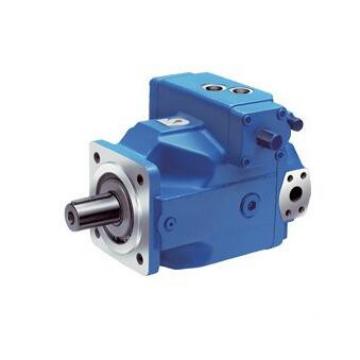 USA VICKERS Pump PVH131R13AF30B252000002001AB010A
USA VICKERS Pump PVH131R13AF30B252000002001AB010A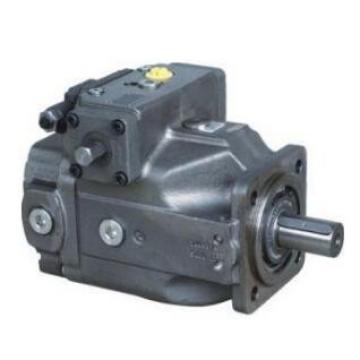 Parker Piston Pump 400481002108 PV140R1K1B4NWLZ+PGP517A0
Parker Piston Pump 400481002108 PV140R1K1B4NWLZ+PGP517A0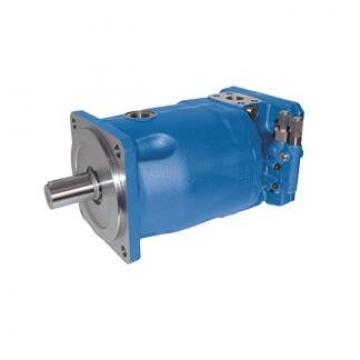 Parker Piston Pump 400481003286 PV180R1K1A4NYCD+PGP511A0
Parker Piston Pump 400481003286 PV180R1K1A4NYCD+PGP511A0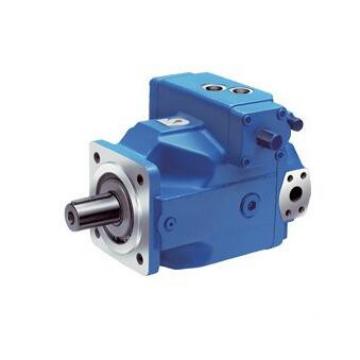 USA VICKERS Pump PVH057R02AA10B25200000100100010A
USA VICKERS Pump PVH057R02AA10B25200000100100010A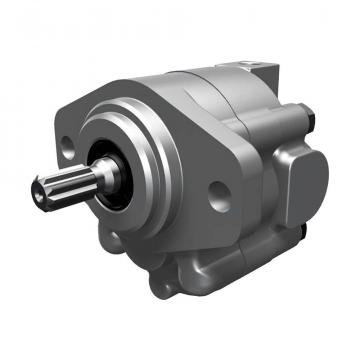 Parker Piston Pump 400481004166 PV270R9K1B4NYLZK0033+PVA
Parker Piston Pump 400481004166 PV270R9K1B4NYLZK0033+PVA